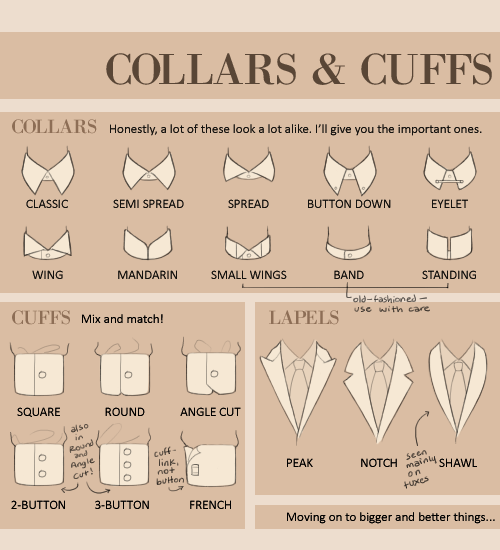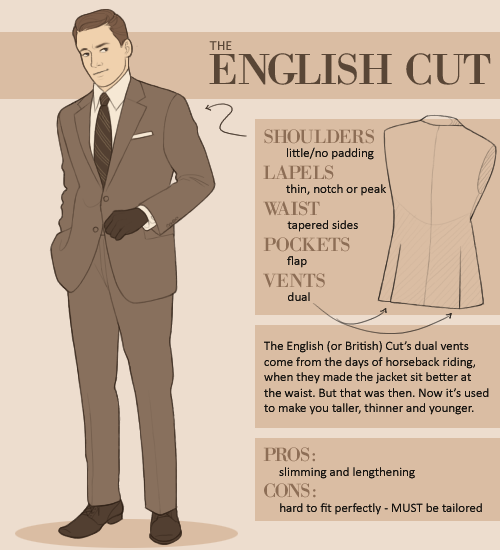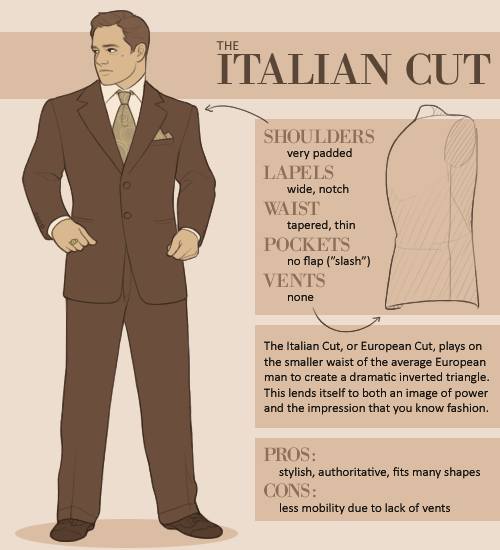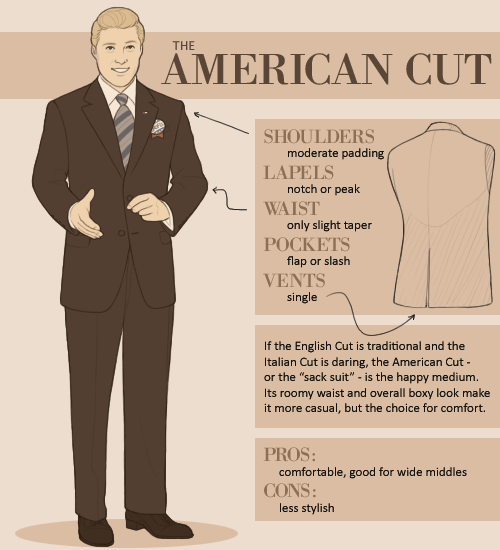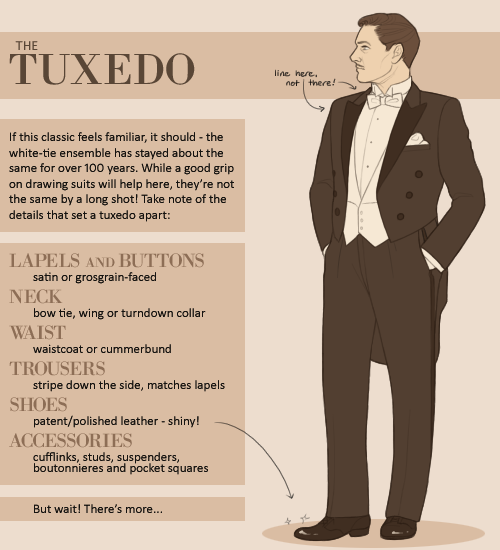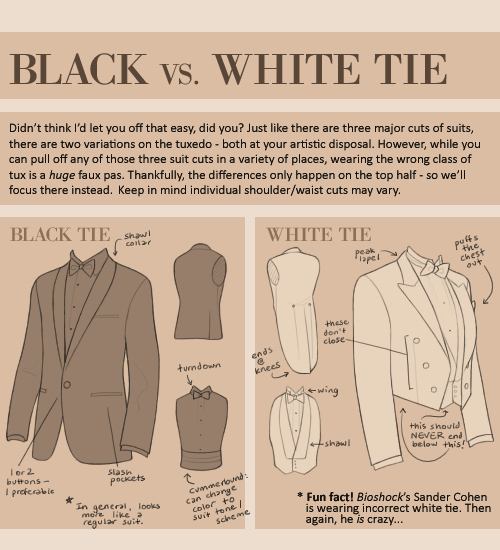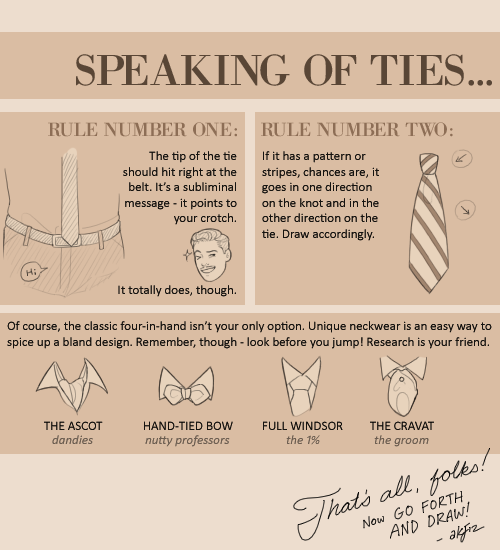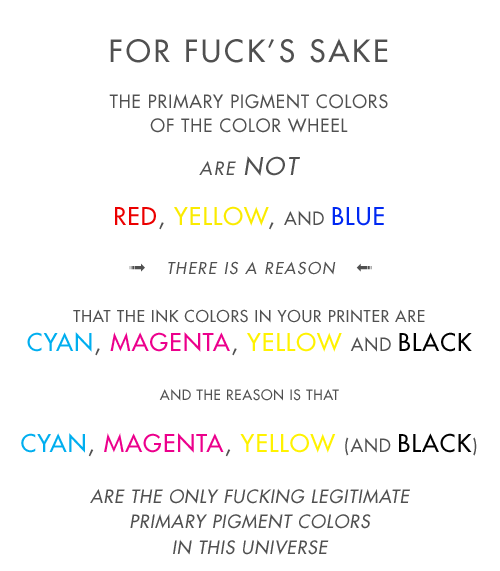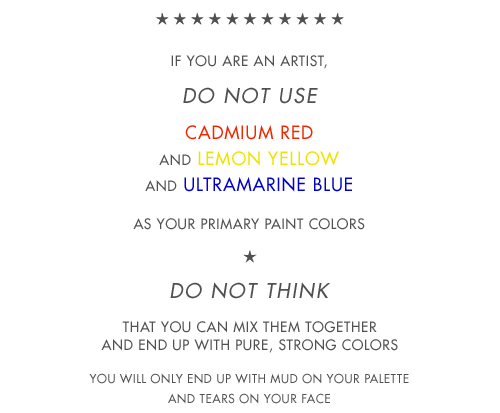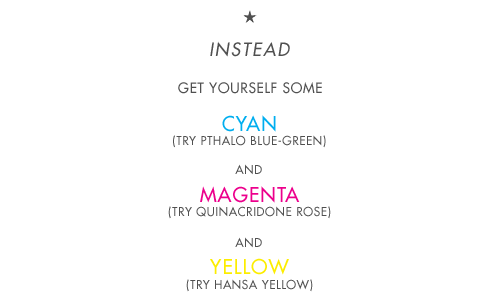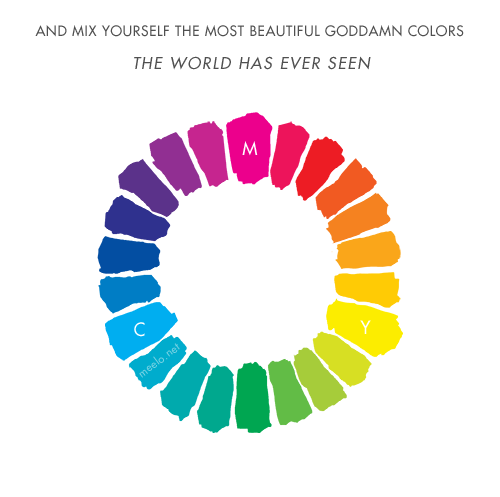Your gateway to endless inspiration
Creative Resource - Blog Posts
General PSA's for begginer alt crafting
- superglue heats up when in contact with fiber, your craft can start smoking or even catch on fire
- you can wash clothing painted with acrylic paint in the washing machine if you turn it inside out and use the lowest temperature
- don't put painted clothes in the dryer.
- you can wash clothes with metal bits in the washing machine but use the handwashing setting, dry the metal bits with a paper towel before hanging them to dry, and know that it WILL be loud
- synthetic dye is needed to dye synthetic fibers and requires a long time simmering in a boiling pot. This WILL stink up the house and you NEVER want to make food in that pot again
- faux leather is vinyl not leather. Get vinyl paint to paint on it
- don't use your teeth as tools, they don't regenerate. Reconstructing enamel costs a small fortune (ask me how I know.)
- when handsewing a lot through thick fabric get thin needles, it will require less force and be less taxing on your wrists. When machine sewing get a higher grade needle (~130 for jean)
- embroidery floss is overpriced and not as strong as it looks. For sewing on heavy stuff get denim thread, it will last forever
- don't feed a 60$ home sewing machine ten layers of denim before you learn how much a servicing fee costs, these things are dellicate
- spray paint is best applied from 30-40cm away, in swift movements. Putting too much or applying from too close will cause drips. You can sand them down and apply a new layer of paint AFTER they dry. Wipe the can nozzle after painting if it's messy, you don't want it to clog and become unusable
- water based markers on fabric will bleed, if not instantly then with time, alcohol markers will fade with time
- most fabric glues are machine washable up to a certain temperature. modgepodge is not waterproof, hitack is handwash only. Check the instructions
- the flatter the surface the easier hot glue will peel off. Faux leather stands no chance, fibers like yarn will hold it best, but is impossible to remove the glue from them in the future
- rivets are a thing that exists, only require a hammer to install and can be used as permanent fabric attachment
- studs, gromets and other metal junk at small fabric stores are laughably overspriced
- acetone (found in nail polish remover) will remove acrylic stains out of furniture, flooring and faux leather, if used in excess can damage the laquer. Can also be used to remove prints and glue off of plastic (do a small test before commiting, might melt the plastic it it's grade is low)
- residue from stickers (and k-tape) can be removed with oil
- acrylic stains cannot be removed out of clothing or carpet so protect your area before painting and don't wear clothes you care about
- if your thread keeps getting tangled or snagging while handsewing try waxing it
- you can lock in screw-in spikes with screw lock glue if you're scared of them falling off because they unscrew
- you can add washers to screw-in spikes if you're scared of them falling through flimsy fabric or too big of a hole
- if you're making anything out of soda cans have a metal file on hand, they are deceptively sharp and will hurt you and rip through fabric you're installing them in
- bleach can be found in mold killing spray (don't touch that shit with bare hands. chemical burn.)
- fabric paints are no different from slightly dilluted acrylic. You can make it yourself by adding a bit of fabric softener to acrylic or honestly even water
- if you are setting anything with an iron use parchment paper or a pressing cloth to pervent your stuff from sticking to your iron and ruining it
- if you want a safety pin somewhere permanently pinch it shut with pliers
- as much as you can, avoid putting glue on clothing, it makes it really hard to change your decisions later on and upcycle the project in the future
- kiss your friends
All you need in life is a color picker willing to expose you to the unbounded madness we call color vision.

me, absolutely clueless: "I want a color just like this one, but in red" color picker: Fuck you think you are, a Mantis Shrimp? Don't talk to me again until you can afford a wide gamut monitor.


STEWART SEMPLE IS MAKING PLANT BASED GLITTER
Recap: him and Anish Kapoor fought on everyone’s right to use the world’s blackest black pigment
Now he’s saving our ability to use glitter without creating microplastic waste and polluting the planet
moleskine = bad


super big & super crisp transparents for all your memeing needs :)
Get yourself a fabric store that will light your fabric on fire for you
No but legit I asked what the fiber content of something was and the guy didn’t know so he cut a chunk off and lit it on fire and felt the ashes and was like. Yeah this is mostly cotton with a lil bit of silk. And that was the moment I knew. This is it. This is the fabric store for me. Also that guy is marriage material. Not for me but damn some person is gonna be so happy with him.
fat bodies tutorial!
ALRIGHT SO my pal @kalreyno wanted help with drawing fat characters and as a fat artist i felt like i could give a bit of helpful insight on that. there’s also been a lot of complaining about “boo hoo fat characters are hard to draw so i can’t include them in my work Ever” goin on lately so if that’s your case then this is for you too!! and also just for anyone who would like help with fat bodies in general, ofc. anyway, let’s get this show on the road!!

let’s start with some common misconceptions. these are the two main attempts at chubby bodies i run into, so i’ll focus on them.
the Anime Chubby i see everywhere, and it’s just……so wrong in many ways. first of all, there is almost no additional body fat compared to your average thin character - except for where it’s added in “attractive” places (breasts, hips, thighs). the breasts are way too perky, and don’t have the realistic shape fat would give them (though how to draw accurate breasts is another tutorial all on its own lmao). there is still a thigh gap, which usually only happens in very thin people, and bones are still visible on the surface of the skin, which also rarely happens in fat people.
the Michelin Man is better in some ways, but still not that great. it’s a slightly better attempt, but basically all that’s done there is taking a thin character and blowing them up, while giving no thought to fat distribution. the thigh gap is usually still present, and they look a lot more hard than soft - and fat is very soft and pliable.
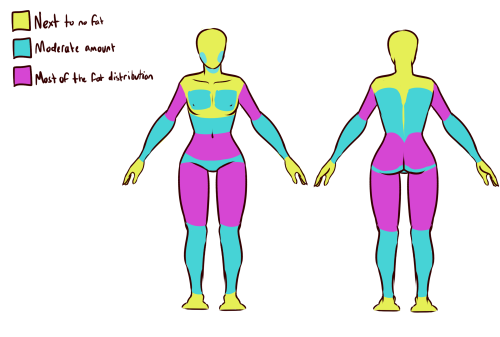
here’s a chart on how fat usually distributes (if you can’t read my messy writing, “1. next to no fat, 2. moderate amount, 3. most of the fat distribution”). basically, the more muscle an area has, the more prone it is to develop fat, such as the abdomen, thighs, and upper arms. it’s important to note that fat sits on top of muscle, and that it does distribute in different levels, and not evenly across the body as shown in the Michelin Man.
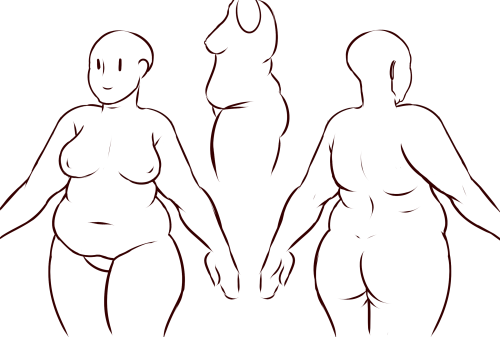
now, here’s an accurate fat body with all of that kept in mind!! notice how the fat isn’t only kept to aesthetically pleasing areas, and how it sits realistically on the character’s body. their breasts sag a lot more, which happens even in thin people with larger breasts, and the nipples are pointing more downwards than straight out. there is no thigh gap in sight, there are no bones in sight, and most importantly, they have fat rolls, which are very important in drawing a convincing fat character!! as far as i know i’ve never met a single person with no rolls at all, and everyone has them, whether thin or fat - they’re just more prominent and more consistently present in fat people. pay close attention to where they are and how they’re shaped.

here are a couple of drawings showing how fat is affected when sitting vs stretching. as seen in the first, the fat specifically on the stomach is distributed a lot more evenly and stretched out, so it becomes “flatter”. the love handles are still pretty visible, though, as well as the fat on the thighs and arms. the breasts are raised with the shoulders, and the fat on the shoulders and near the neck forms rolls as it’s being pushed together.
in the second, there is a lot less room for distribution, so the fat is all pushed together. the breasts sag and the stomach forms rolls and spills into the lap. a good analogy for the way fat works is to liken it to a water balloon, and thinking of how its shape would change when resting flat on a surface, hanging off of a ledge, held upright, etc.

here are a few extra tips i find a lot of people miss!
first on the top is the hip/pubic region. the first circle is showing the way the bellybutton is folded in fat people, as opposed to stretched out in thinner people. the second is the stomach fat spilling over onto the pubic region and creating a separation in the two areas, which is something that’s missing in a lot of art. in addition, the pubic mound also gains fat, making it round as seen in the profile drawing i did up there (i’ve heard people refer to it as fupa?). the last in the hip region is the lack of a thigh gap. i can’t stress this enough!!!! if you’re trying to draw a convincing fat character, make sure their thighs are pretty much always touching!! for reference, mine literally don’t separate until my feet are about 2ft from each other.
the bottom right is showing the double chin, which a lot of people are afraid to draw!! fat does distribute itself here too, and there’s nothing wrong with it, so don’t feel like you shouldn’t give fat characters a double chin in your work for fear of it looking like a caricature.
in the bottom middle, it’s showing how fat affects different types of breasts with the presence of more or less breast tissue.
lastly, at the very right are stretch marks with their usual locations and directions, which i also can’t stress enough!!!!! i sometimes forget to add them honestly, but they’re so important in accurately portraying fat characters, as they literally come from the skin being stretched from fat being gained (and they’re also just rlly neat lookin like why wouldn’t you lmao). some people have less and some people have more, feel free to experiment with them!

the last thing is body types!! there isn’t one single way for a person to be fat, so feel free to experiment with shapes once you’ve learned the basics!!
so there you have it, a tutorial on how to draw chubs!! now go forth and make some accurate fanart or some rad fat characters, because the world could always use more of both. hmu if you have any questions or concerns, and thanks for reading!!
EDIT: someone pointed out the bad wording in the tutorial. thank you for bringing it to my attention and sorry for offending anybody. i’ve updated the tut, so please reblog this one!
